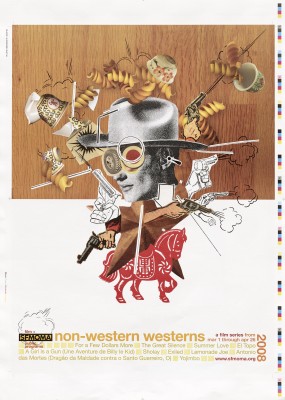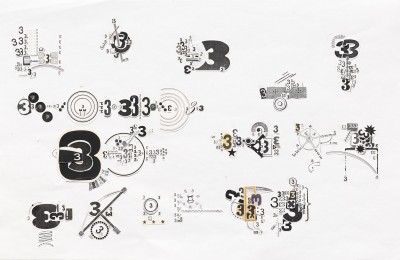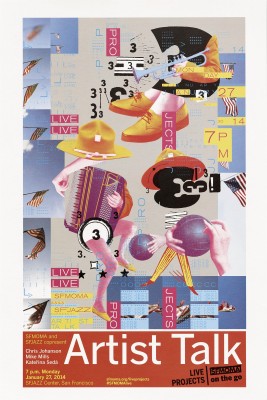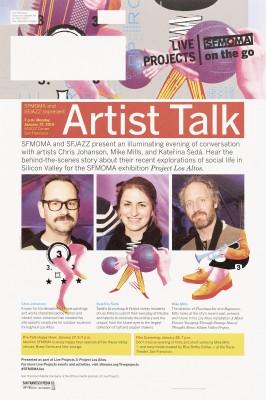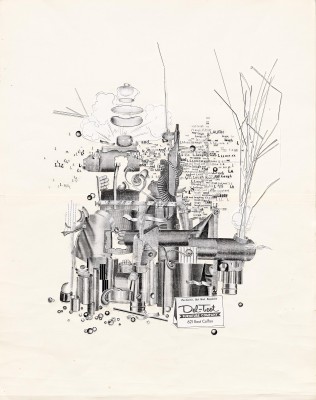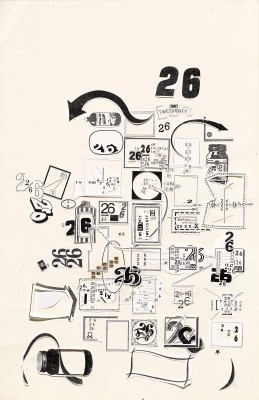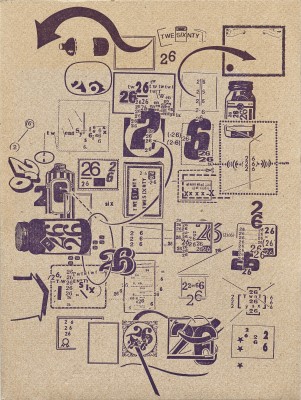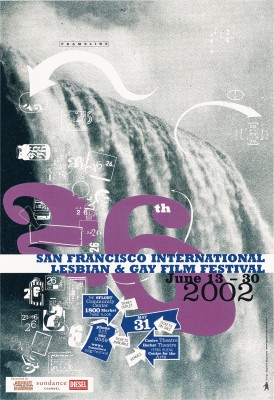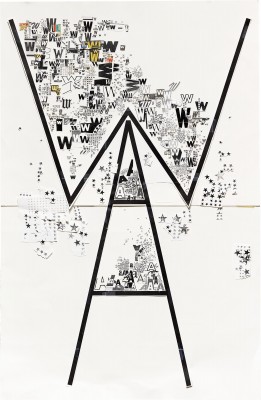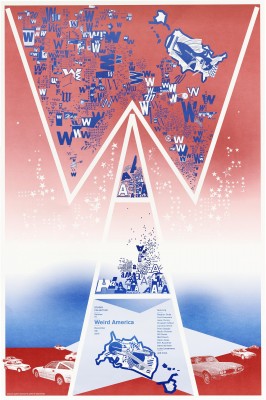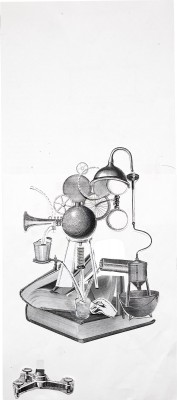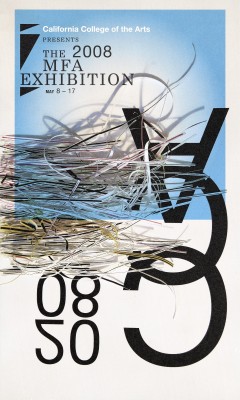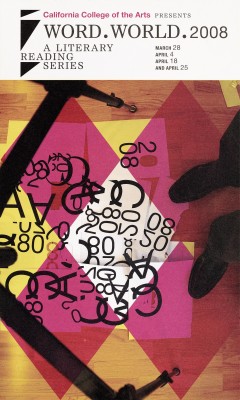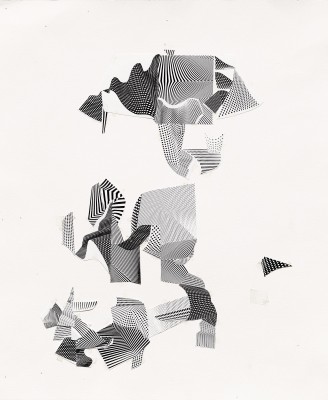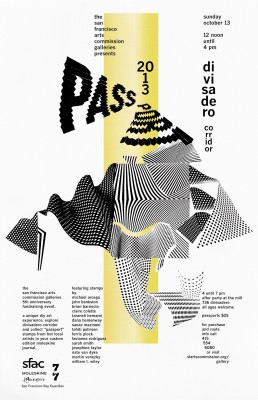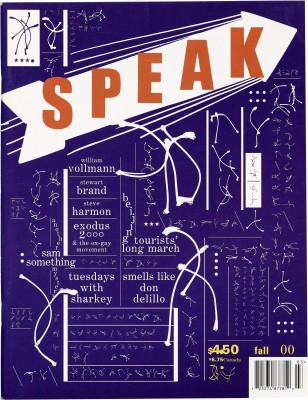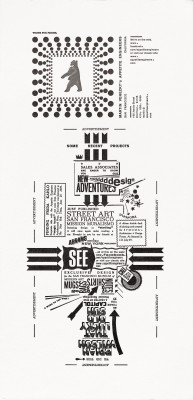News
This Just In: Martin Venezky
The San Francisco designer reminds us about the beauty of not knowing how things will turn out.
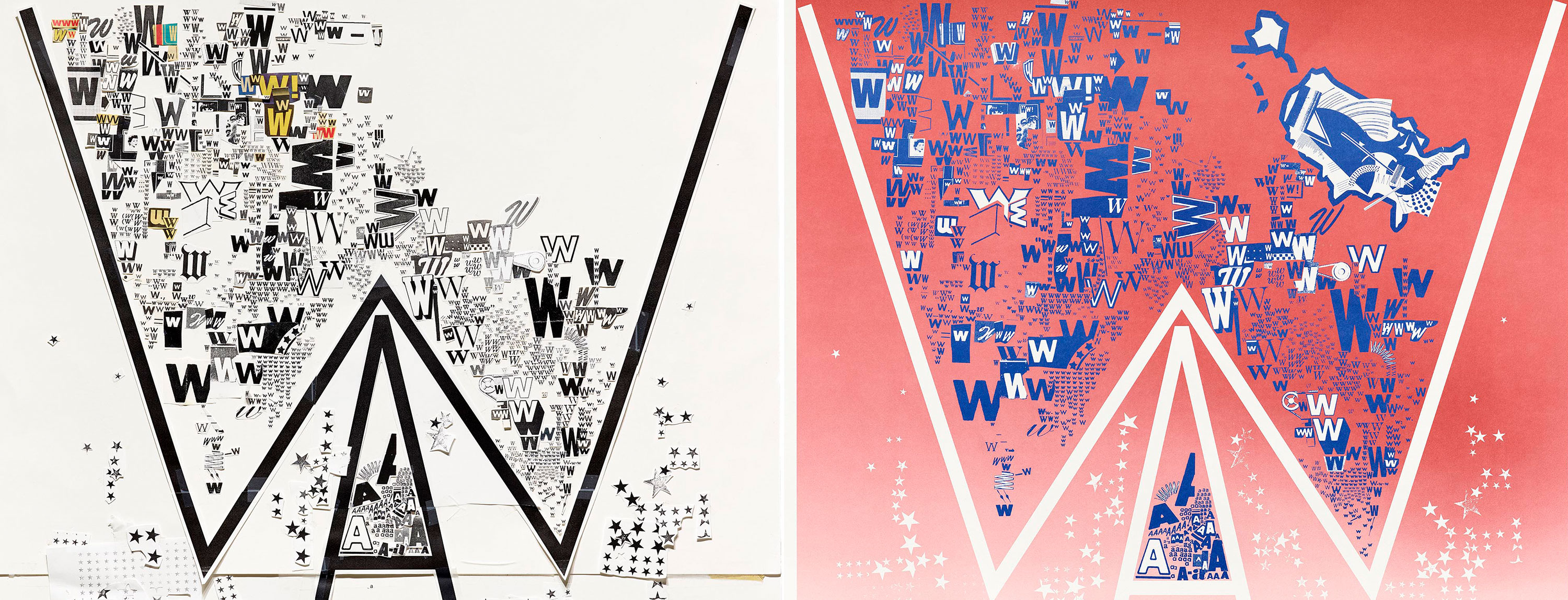
On paper, Martin Venezky is an artist, designer, photographer, and educator. He is also a collector, and some might even consider him a sort of curator. He often plays these roles all at the same time, whether he’s working on a project or not. In both his life and in his practice, he tells stories by combining and recontextualizing images and objects found in the world to create new worlds. His process reveals a lot about his own story too — one of imperfection, surprise, and patience.
“To design a poster and do the whole thing digitally? That gets boring. You’re just sitting there hitting keys, but you kinda wanna get in and see the scale of it.”
When I met with Venezky, he brought a large blue binder filled to capacity with photocopies. It’s apparently one of 30 binders with images pulled from a closet of 19th-century magazines, Solotype books, antique B2B catalogs that he has been using since the ’90s. “The binders are purposefully unorganized,” he proudly told me as he paged through the one in his hands, flipping past illustrations of jewelry, cowboy hats, to a variety of typefaces and more. The binder is where he begins any project — selecting one off a shelf at random, without a plan or sketch to follow. Serendipity is an intentional part of the process. “If it’s going to be about tools, and I just look for tools, then that’s all you find,” he said. “You don’t surprise yourself. Sometimes the topic will intersect with things in an unexpected way.”

After finding interesting pieces, he cuts each one out by hand — a standard way of working for any collage artist, but few work at the size and scale that Venezky does. From pieces of paper that measure less than a centimeter, to the final full-size product, his collages yield hundreds of letterforms and images, perhaps even to the thousands if you have the patience to count them all. Luckily, Venezky is patient. He cuts and tapes things individually as he goes, full objects or parts of them for a bit of abstraction, instead of cutting them out all at once. “It’s thousands and thousands of decisions, each one individually made,” he said. Working slowly allows him to observe how the work is growing and see where it takes him naturally.
Imperfection, Awkwardness, and the Boredom of Working Digitally
A lot of Venezky’s collection at the Archive dates to the 1990s and 2000s, when digital processes began eclipsing analog ones. But for Venezky who was formally trained in an analog method, and learned to appreciate working by hand from his uncle, a calligrapher and map maker, he never quite saw the appeal. “To design a poster and do the whole thing digitally? That gets boring,” he said. “You’re just sitting there hitting keys, but you kinda wanna get in and see the scale of it.”
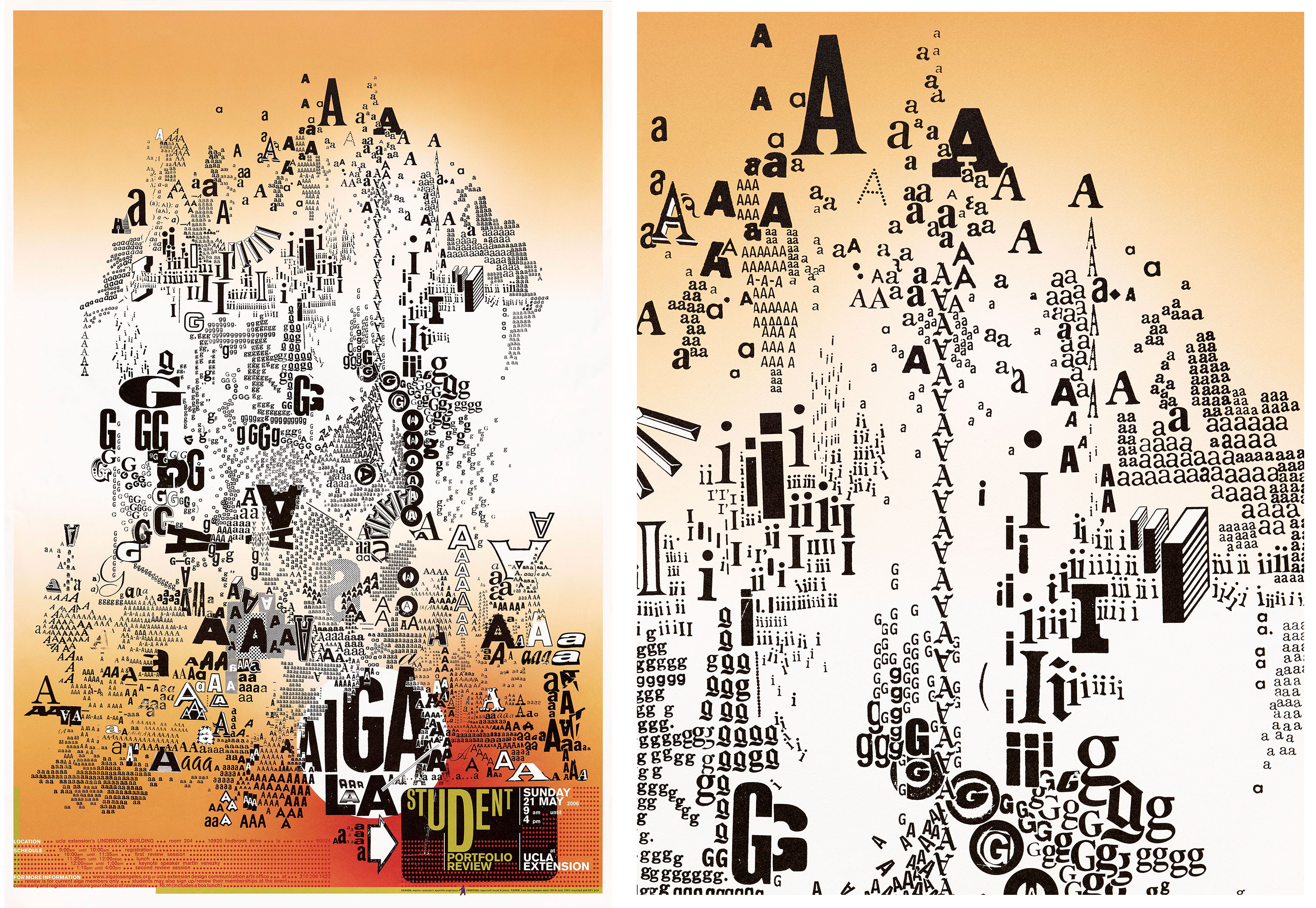
Although he calls the cutting, scanning, and taping a “dumb way of working”, he likes how analog processes and materials make things slightly awkward — they’re not perfectly snapped to a grid or baseline, but twist and turn, and get pasted up every which way. Even the lines, dotted and solid, pulled from typeset catalogs and indexes are cherished for their irregularity. “I’ll cut out lines and rules [from catalogs] because it’s much more interesting than making a line digitally and then cutting it out — who cares about that? It’s gonna be a perfect line. I like them to be slightly imperfect,” he said.
When Worlds Collide
The more I talk with Venezky, the more I realize that his work is very personal — however unintentionally. What you see in any poster, catalog or book cover, are not worlds contained within paper borders, but a reflection of his own world at certain points in time. His poster for The Grateful Palate, a wine producer and distributor, captures moments when he was spending a lot of time with his cat, looking at faces from movie magazines and high school yearbooks, and working on a bodybuilding magazine. After finding a book on show horses at a flea market one day, Venezky thought it would be fun to see them galloping through the wine labels. “These other things from my life, other projects, found their way in here,” he said.
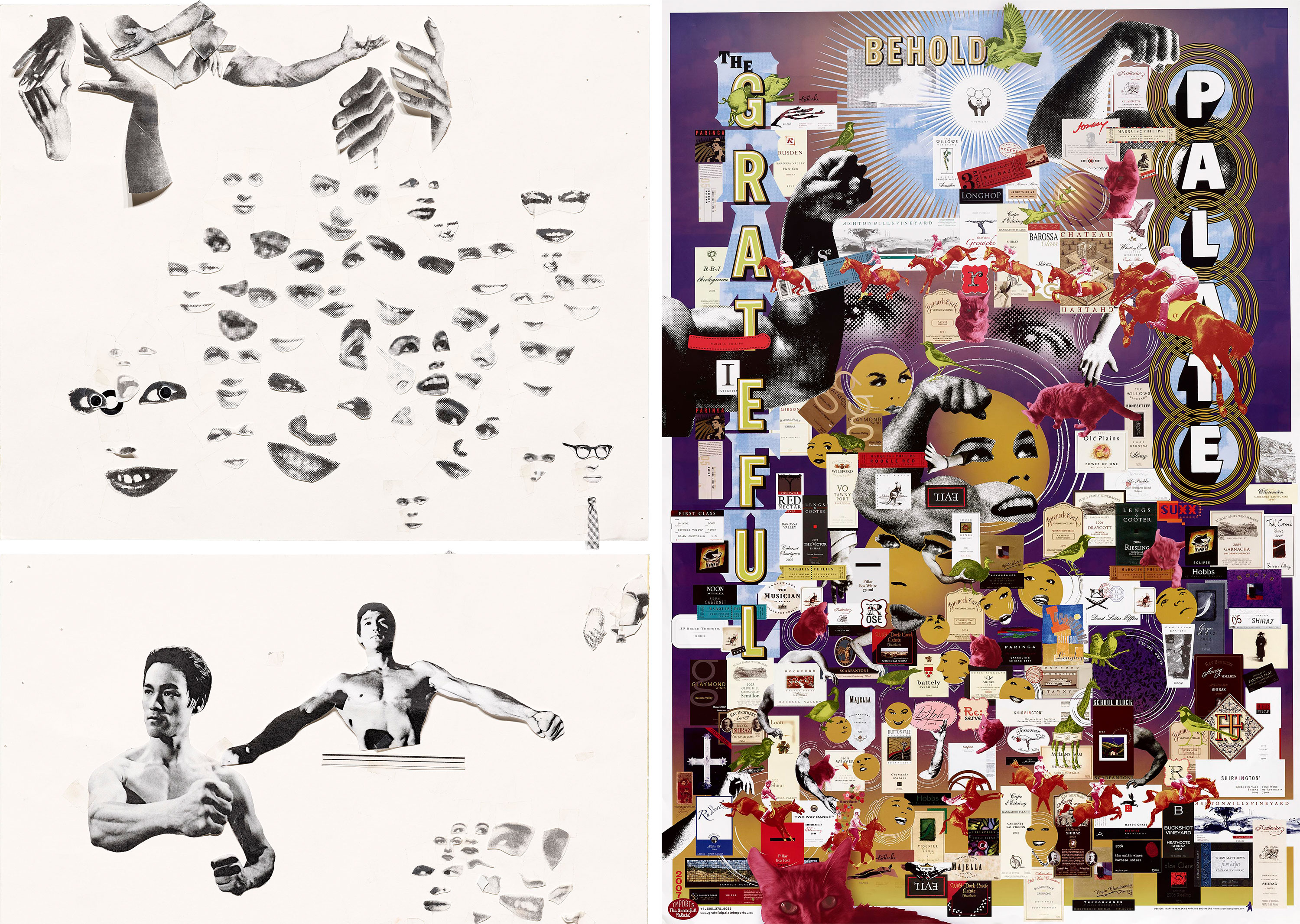
This practice of recombining and recontextualizing things he finds in his world, allows him to create new ones. He narrated the poster for me, “Here, a hand is holding up a leaf that is actually on the wine label. The cat is looking at the bird, and is going to try to grab and eat it, but the bird will probably fly away! Then all these faces start to appear, observing the cat hanging out up there.” He doesn’t remember why the word “Behold” is at the top, but he felt like it was just the right thing to say: “Behold! This crazy world of these wines and cats and faces.”
Creating a Visible, Machine Logic
As wild and playful as Venezky’s worlds are, they have a logic to them — a notion that resurfaces over and over again throughout our conversation. He surmises his fascination with a visible logic might stem from one of the first sources he bought: a catalog about car parts from the 1920s. In fact, industrial themes and machinery often appear throughout his work, with contraptions that are of his own imagination. Even when he is out collecting at antique fairs or recycled craft stores, he gravitates towards machine parts, taking them home and disassembling them to see the parts of the whole.
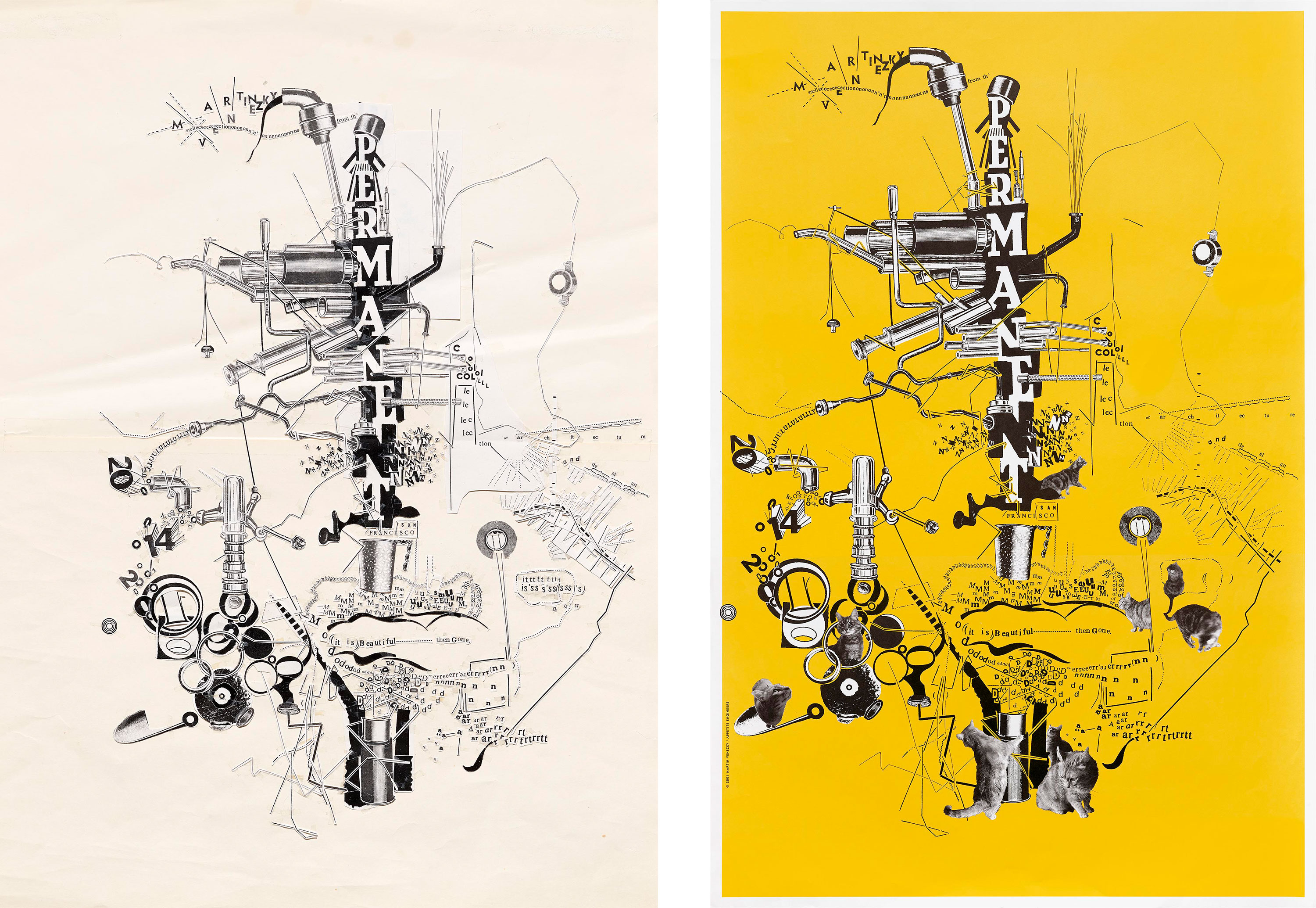
Digging a little deeper, he’s interested in machinery because their construction illustrates how they work and make sense — a lesson he has taken up and embodies in his practice. “There’s a logic to the building of these old machines that we can understand if you spend enough time with them,” he said. “And if you compare that to the logic of [a smartphone] — how does this work? With machines, one thing leads to another thing and they all have to connect — it’s a machine logic.” Similarly, in his work, he blasts phrases into their smallest atomic units, the letterform, or chips away metal parts found in catalogs to eventually fuse them back together and build his own machine logic.
Selections from the Martin Venezky Collection
All images in this gallery are hi-fi captures. Click an image to enter fullscreen view, then pinch or use browser zoom to enlarge.
Behold: The Venezky Collection
Our collection of Venezky’s work and process material reflects the breadth and depth of his talents. From posters for local and national institutions, to editorial illustrations and covers for magazines, we’re particularly excited to have the developmental material that captures the rigor of creating by hand. This spotlight only scratches the surface of his collection, so we invite you to explore it in greater depth on a tour or research visit.
— Florence Fu, Editorial Associate

